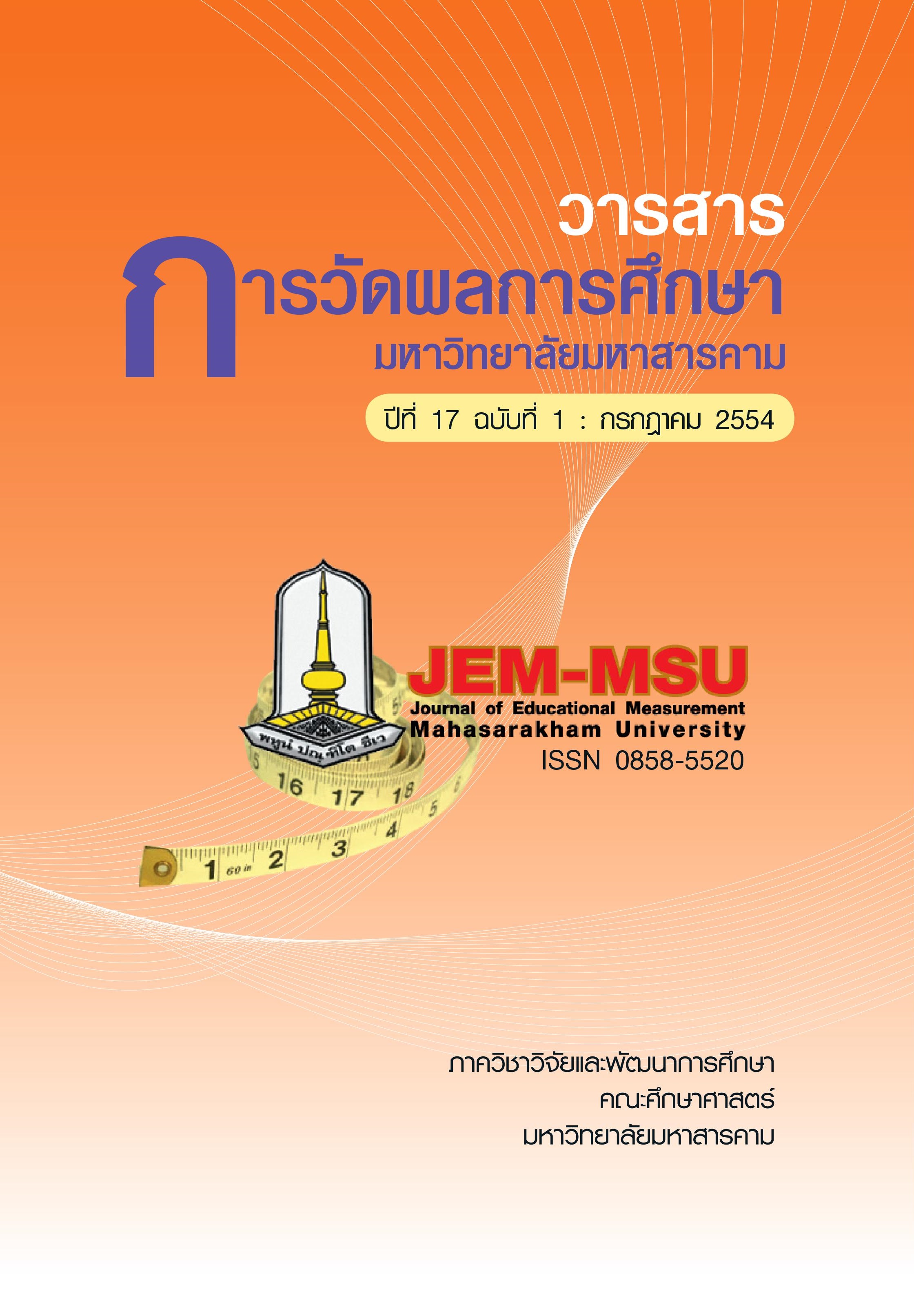ปัจจัยที่สัมพันธ์กับประสิทธิภาพการสอนของครู กลุ่มสาระการเรียนรู้คณิตศาสตร์ ช่วงชั้นที่ 3 จังหวัดศรีสะเกษ
Main Article Content
Abstract
Teaching effciency of mathematics teachers is important to organization of mathematics
learning and teaching to achieve the established purposes. The purposes of this study were
to: 1) examine factors related to teaching effciency of class interval 3 mathematics teachers,
and 2) construct a predictive equation of teaching effciency of class interval 3 mathematics
teachers . The sample consisted of 214 mathematics teachers, who taught at class interval 3 in
Si Sa Ket province in the academic year of 2007, obtained using the cluster random sampling
technique. The instruments used in the study were the 5-rating-scale inventories on factors
related to teaching effciency of class interval 3 mathematics teachers with 120-items,
discriminating powers ranging .22 to .70, and a reliability of .97 ; and a 30-item inventory on
teaching effciency of mathematics teachers with discriminating powers ranging .49 to .83 and
a reliability of .96. The statistic used for analyzing the collected data was the stepwise
multiple regression analysis.
The results of the study were as follows:
1. Eight factors positively related to the teaching effciency of class interval 3
mathematics teachers in Si Sa Ket at the .05 level of signifcance were in this order from the
highest to the lowest correlation coeffcients (r
xy
) : 1) classroom environment arrangement
(.862), 2) measurement and evaluation(.801), 3) academic ability(.785), 4) relationship between
teachers and students(.537), 5) teacher profession attitude(.534), 6) teacher personality(.518),
7) teacher’s attitude toward students(.452), and 8) work motivation(.357).
2. The factors which could predict teaching effciency of class interval 3 mathematics teacher at the .05 level of signifcance included : classroom environment
arrangement (X8), measurement and evaluation (X7), academic ability (X6) and teacher
personality (X1) with a multiple correlation coeffcient (R) of .895 and adjusted coeffcient of
determination (R2adj) of .797. The predictive equation of teaching effciency of mathematics
teachers could be constructed in a raw score form as below.
Y/ = .495 (X8) + .245 (X7) + .196 (X6) + .092 (X1)
In conclusion, there were these 4 factors related to teaching effciency of class interval
3 mathematics teachers in Si Sa Ket : classroom environment arrangement, measurement and
evaluation, academic ability and teacher personality. These factors should be considered as
the importance to improve teaching effciency of mathematics teachers in the future.
Article Details
The content and information contained in the published article in the Journal of Educational Measurement Mahasarakham University represent the opinions and responsibilities of the authors directly. The editorial board of the journal is not necessarily in agreement with or responsible for any of the content.
The articles, data, content, images, etc. that have been published in the Journal of Educational Measurement Mahasarakham University are copyrighted by the journal. If any individual or organization wishes to reproduce or perform any actions involving the entirety or any part of the content, they must obtain written permission from the Journal of Educational Measurement Mahasarakham University.


